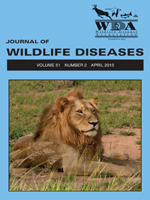Data on reptile analgesia are scarce for nonsteroidal anti-inflammatory drugs (NSAIDs) and opioids and almost completely lacking in sea turtles, even though emergencies requiring correct pain management are very frequent in their rehabilitative medicine; therefore, dosage regimens extrapolated from other species involve the risk of clinical failure and damage to the animals. We describe the pharmacokinetic behavior of meloxicam in the loggerhead sea turtle (Caretta caretta). We chose meloxicam because of its selective anti-cyclooxygenase-2 activity and lesser adverse side effects. No data are available on the capacity of turtles to tolerate NSAIDs, so we chose a dose of 0.1 mg/kg of meloxicam. Plasma concentrations of meloxicam were unexpectedly low both for intravenous (IV; maximum concentration [Cmax] = 0.04±0.02 µg/mL) and intramuscular (IM; Cmax = 0.07±0.09 µg/mL) administration. A double-peak phenomenon occurred after both IV (time for second peak concentration Tmax2 = 10.33±10.89 h) and IM (Tmax2 = 1.17±0.75 h). The second peak after IM injection was premature, so some difficulty and delay in absorption appears to be an appropriate explanation. Furthermore, the area under the curve, and therefore systemic bioavailability (F = 31.82±28.24%), after both IV (0.30±0.29) and IM (0.10±0.03) injection appeared particularly limited. Terminal elimination slope and mean residence time indicated fast elimination after IM dosing; as a consequence, plasma concentrations dropped below analytic limits in 8 h. Considering that IM is the favored route of administration of drugs in rescue centers, it is unlikely that meloxicam at 0.1 mg/kg is an appropriate choice, particularly in long-term pain management protocols.
How to translate text using browser tools
1 April 2015
Pharmacokinetic Behavior of Meloxicam in Loggerhead Sea Turtles (Caretta caretta) after Intramuscular and Intravenous Administration
Olimpia R. Lai,
Antonio Di Bello,
Simona Soloperto,
Daniela Freggi,
Giacomo Marzano,
Leonardo Cavaliere,
Giuseppe Crescenzo
ACCESS THE FULL ARTICLE

Journal of Wildlife Diseases
Vol. 51 • No. 2
April 2015
Vol. 51 • No. 2
April 2015
analgesia
Caretta caretta
meloxicam
NSAIDs
pharmacokinetics
reptiles




